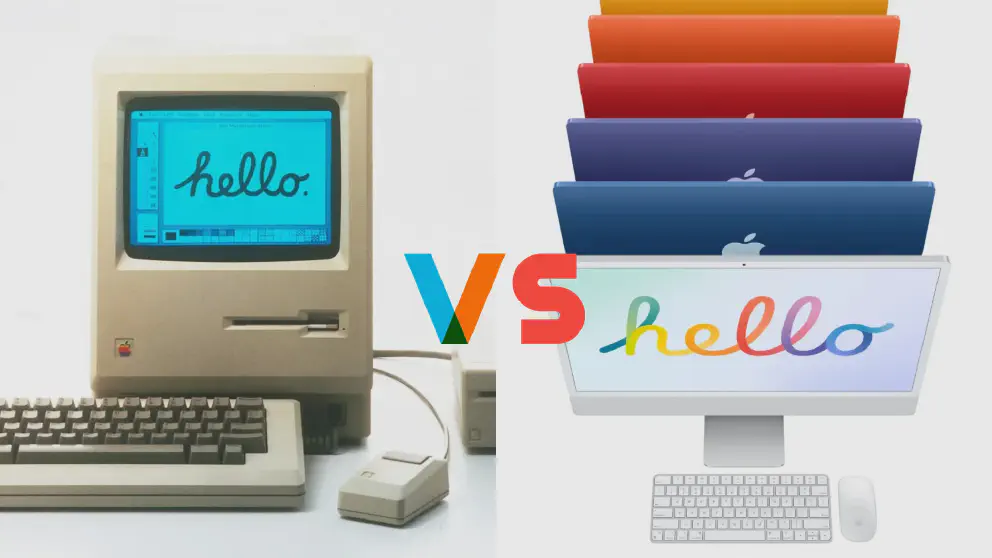Around 40 years ago, as Americans are watching the Superbowl XVIII between Washington Redskins (now Commanders) and Los Angeles Raiders (now Las Vegas Raiders), the world is treated with an enigmatic ad. It shows the scene of a totalitarian regime marching on in honor of their leader, which is shown, as giving a speech. Now, there’s a girl, in a white shirt and orange shorts running while being chased by foot soldiers across the hall towards the screen showing “Big Brother”, in stark contrast with the black and grey of the drones. With full might, she swings her hammer and smashes the screen. The video fades out and the greatest proclamation even shown in an ad appears:
On January 24th, Apple will introduce the Macintosh. And you’ll see why 1984 won’t be like “1984”
The subtext of the ads has several layers and, unfortunately, we don’t see these kinds of taught-provoking bites anymore. Apple promised to usher the people from IBM. Big Blue. Back in 1984, Apple was the underdog, and IBM was the computer company. Apple is hoping to upend that by providing a computer for the masses. A computer that is personal. The personal computer.
And 40 years later, we see how big the change that Apple brought and it all started with the Macintosh.
Macintosh 1984
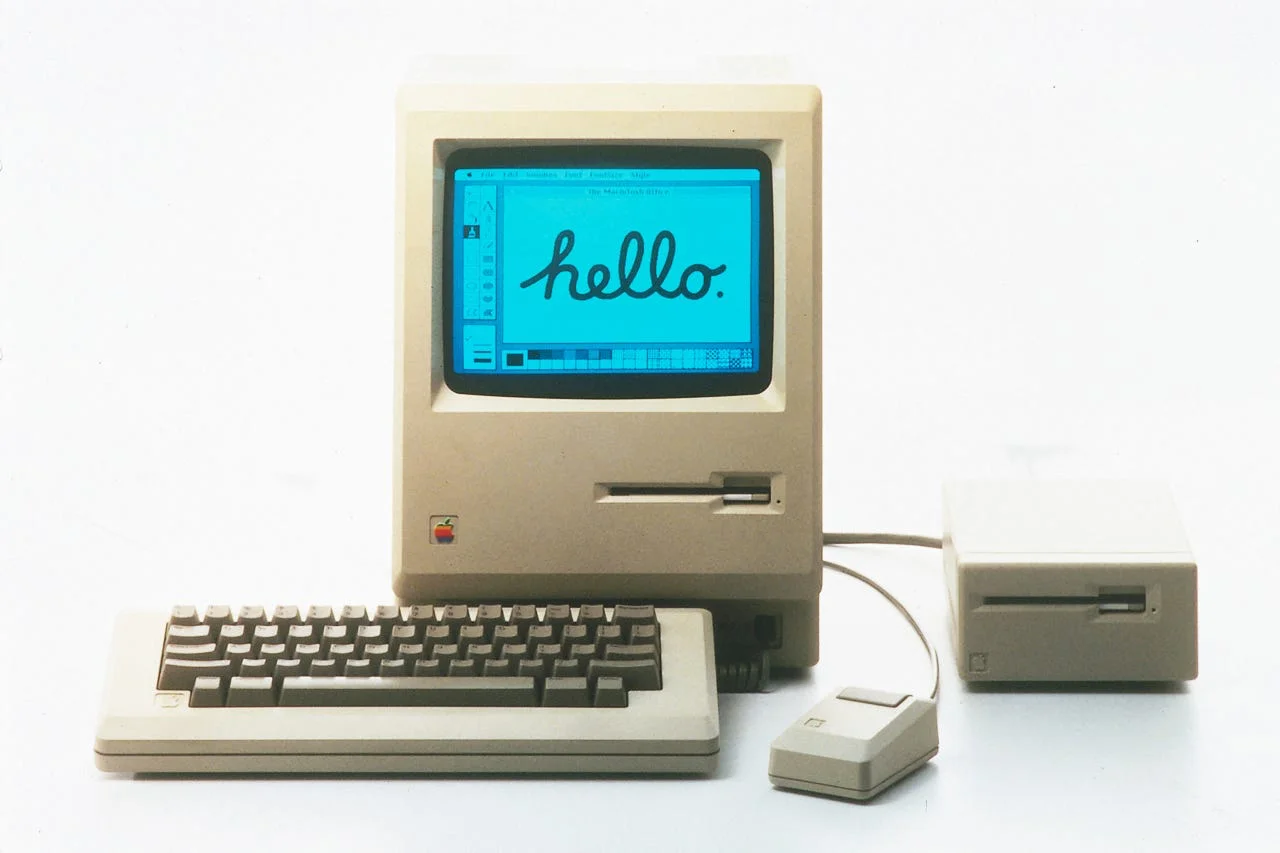
As innovation goes, the Macintosh is not the first computer with a graphical user interface (GUI), a computer that uses a mouse, or an all-in-one computer. It is also not the fastest computer at that time because most of the processing power is to power the beautiful graphics.
The real innovation that the Macintosh brings is to have beautiful graphics in early 80s tech for masses of people. The power of Mac is instead of seeing a blank screen and an A:> prompt, you’ll get a windowing system that mimics the real world. And eventually, a small company in Seattle copied it and the rest is history.
Some key features of the 1984 Macintosh:-
- $2,495 launch price: Apple was pricey even then, and even more so. But that’s the cost of being the best. Ironically, the Mac is supposed to be the “affordable” computer by Apple.
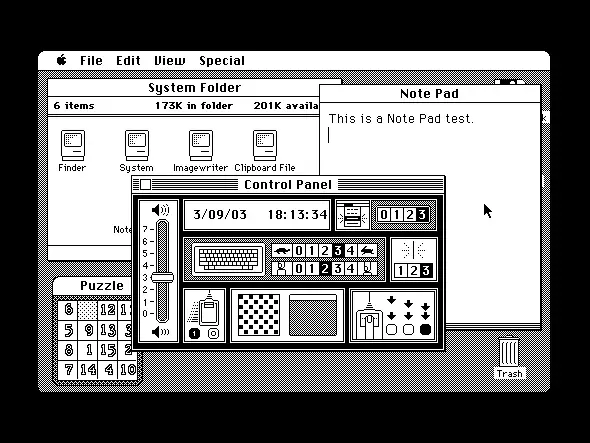
- System 1: Things we take for granted when using our computers today, have their roots in System 1. The rolling menu system, the rounded corners in the windows, the trash can where you want to delete your files, and applications that are represented by icons are some of the few examples that System 1 brings and we take for granted. Nowadays, you can even try it in your favorite browser.
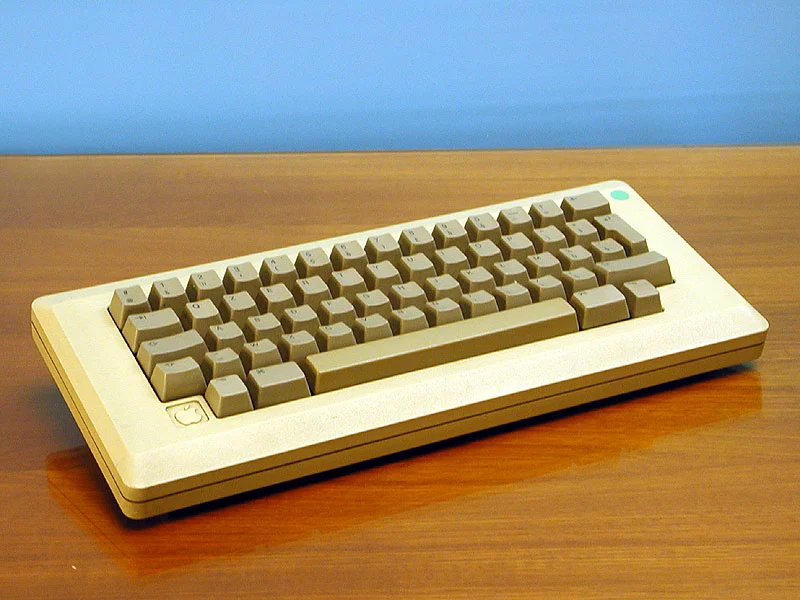
- The Keyboard: The original keyboard does not have any function keys. Steve Jobs hated those keys when Apple introduced them during his absence. The “control” key wasn’t there either.
- Motorola 68000: The base model has 128 KB of memory, and it uses a 3.5" floppy drive (new standard at that time) and a 9" display with 512 by 342 pixels. For comparison, the M3 has more memory in its level 1 cache than the Mac and the first iPhone almost matches in terms of display resolution.
iMac 2024

And here is what 40 years of progress did for the Macintosh. The concept of the iMac is the same as the first Macintosh Apple first sold 40 years ago: an all-in-one computer that is friendly, easy to use, and above all: useful for everyone. It’s like a bicycle for the mind and the current iMac does the job.
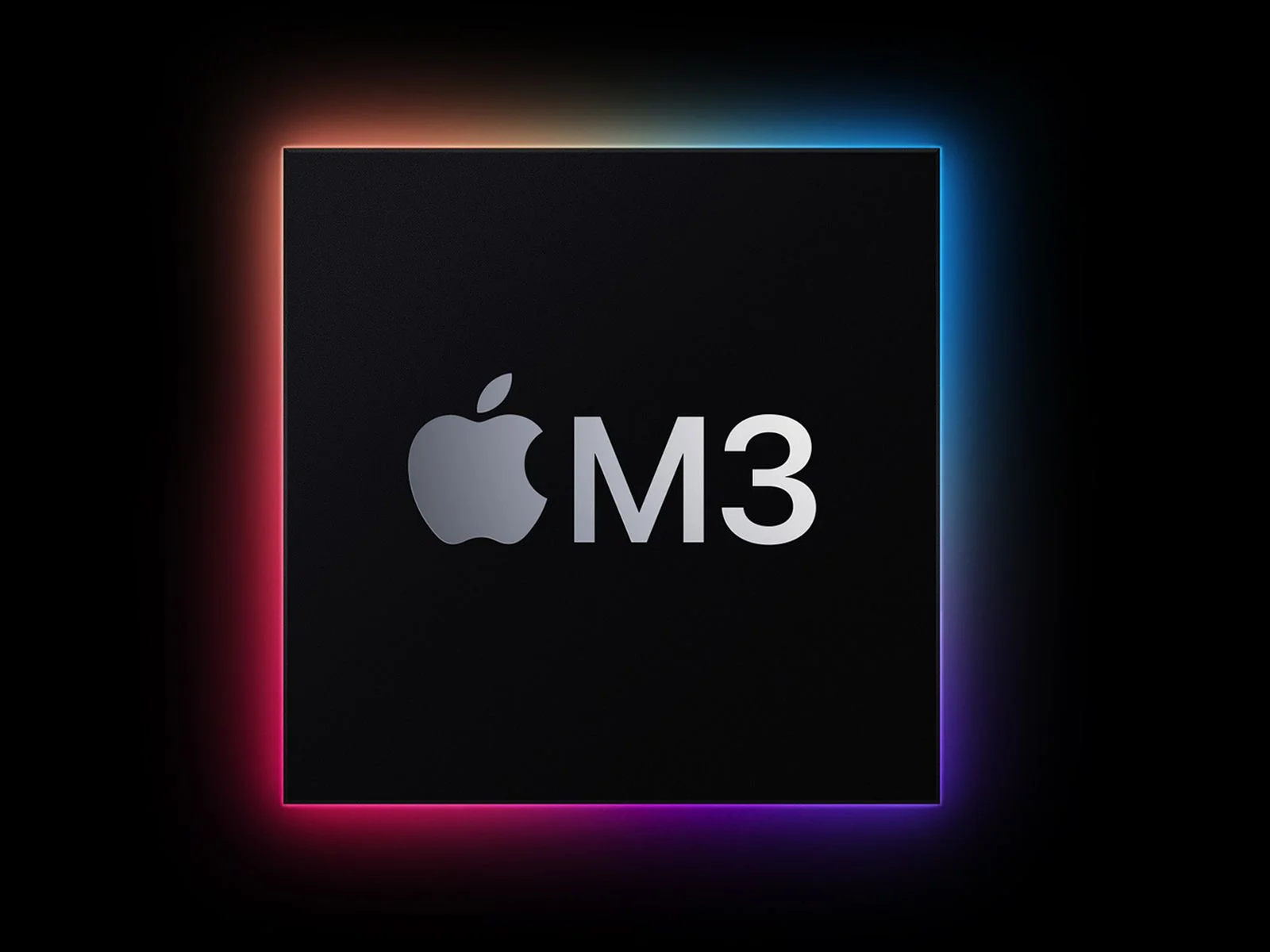
- M3 chip: It is the latest chip by Apple and it has features as small as 3 nanometers across. That’s just 15 silicon atoms wide. The graphics engine can do 3.6 trillion floating point operations per second, more powerful than the fastest supercomputer in the world in 1999. And it uses less power than to boil your kettle.
- Storage: The original Macintosh has no internal storage. The current iMac does not have any peripherals to accept storage media like disks. Instead, we mostly get data from computers from around the world through a global network called the Internet.
- Networking: There was no concept of networking back when Macintosh was introduced. Now we have an always-on, ubiquitous, fast network called the Internet where we do commerce, work, play, and entertain ourselves.
- Display: Back then, the screen was black and white. Of course, with some trickery like dithering, you can have some shades of grey. Today, the screen displays over 1 billion colors and has a resolution that is unthinkable at that time.
- Mouse and keyboard: The iMac still has a mouse and keyboard setup just like the original Macintosh. But now it has more keys than before, it’s highly functional, sleek, and in color. There’s also TouchID which means that the processor in the iMac keyboard could be more powerful than the main processor in the original Macintosh.

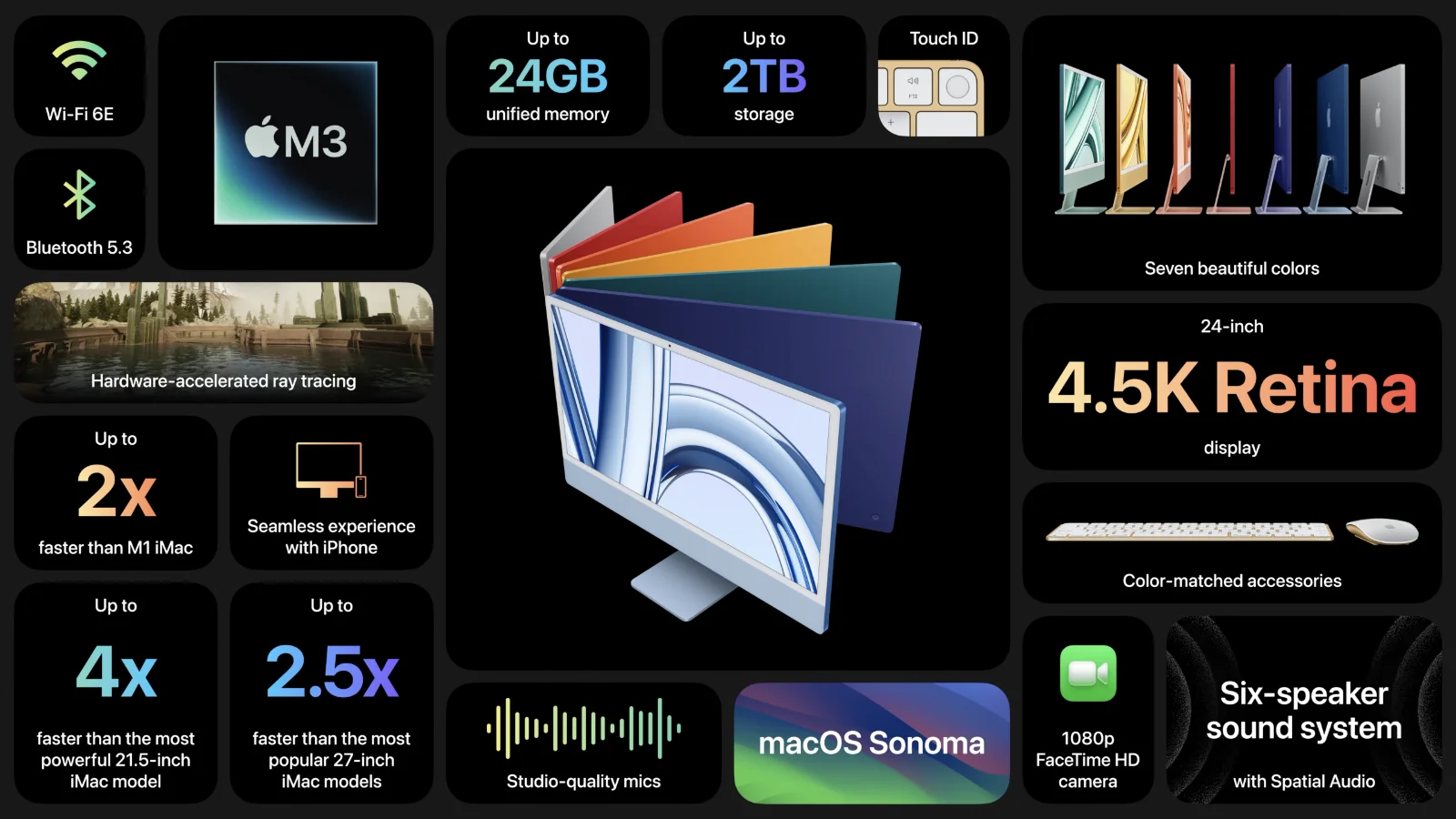
The future?

Right now, the iMac is not Apple’s most popular product. When people think of Apple today, most people will think of the iPhone, AirPods, and maybe MacBook (Air or Pro). Is computing like how Apple imagined it in the 1980s dead?
No, over the years, the nature of computing has evolved. From the desktop personal computer, it evolved into portable laptops and later into computers that you can bring in your pocket, aka smartphones and tablets. It also evolved into a computer that you put on your wrist (Apple Watch) or listen to (AirPods).
The computer is still the most important device that mankind has created and Apple is riding the wave of innovation.
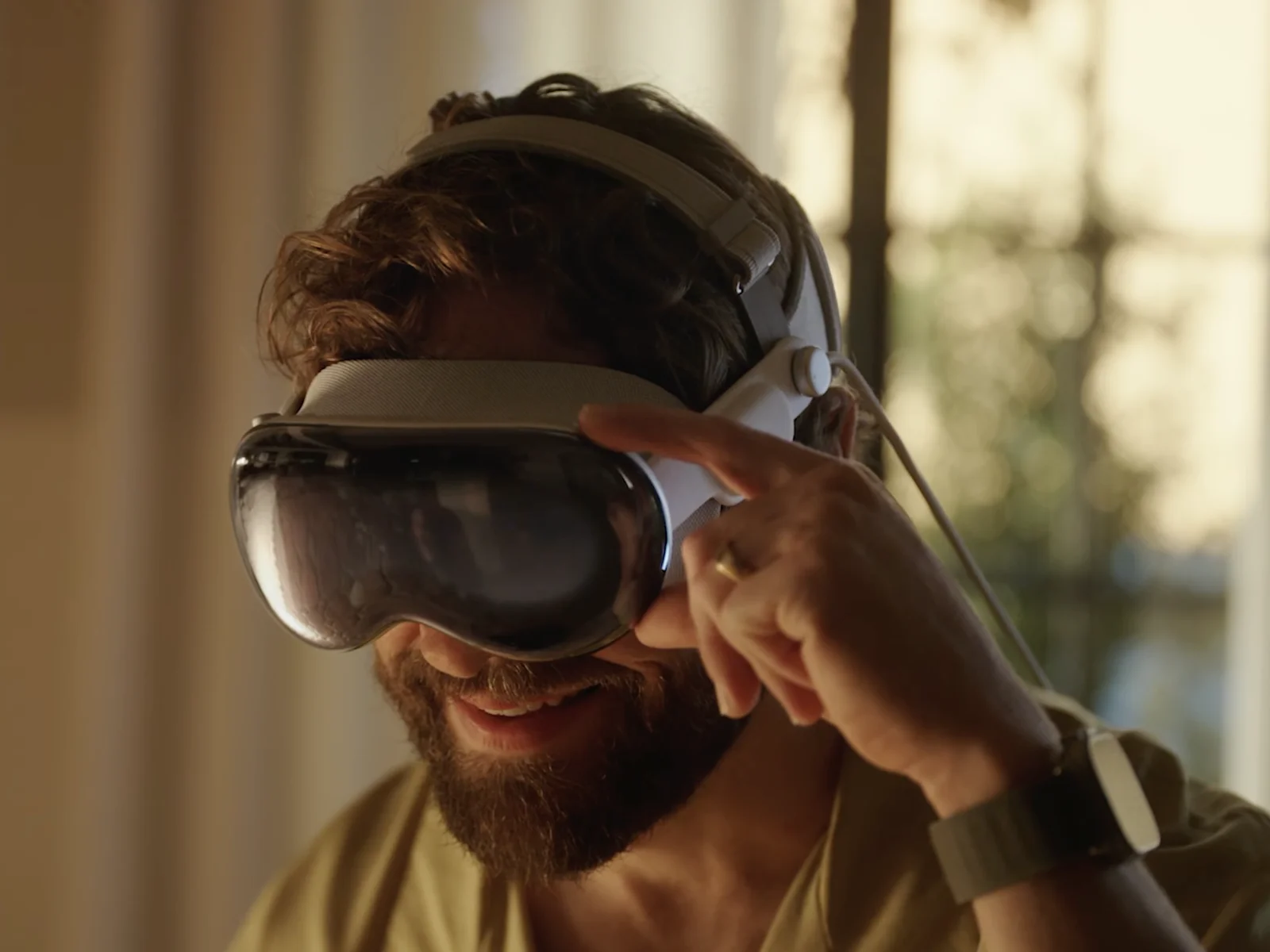
As for the future, Apple envisions that we are going to wear them to augment or create our reality. The future of computing is immersion and augmentation. We are going to be one with the computers in the future.
Coverage from around the web
- Arstechnica - 12 weirdest Macs ever to hit the market
Plug
Support this free website by visiting my Amazon affiliate links. Any purchase you make will give me a cut without any extra cost to you
| Base | Pro | |
|---|---|---|
| iPhones | iPhone 16 / iPhone 16 Plus - (Amazon) | iPhone 17 Pro / iPhone 17 Pro Max - (Amazon) |
| iPhone Accessories | Find them at Amazon | |
| Watch | Apple Watch SE (Amazon) / Apple Watch Series 11 | Apple Watch Ultra 3 (Amazon) |
| AirPods | AirPods 4 (Amazon) | AirPods Pro 3 (Amazon) / AirPods Max (Amazon) |
| iPad | iPad 10 (Amazon) / iPad Mini (Amazon) | iPad Air M3 (Amazon) / iPad Pro M5 (Amazon) |
| Laptops | MacBook Air M3 (Amazon) | MacBook Pro M5 (Amazon) / MacBook Pro M4 Pro/ M4 Max (Amazon) |
| Desktop | Mac Mini M4 / M4 Pro (Amazon) / iMac M4 (Amazon) | Mac Studio / Mac Pro |
| Displays | Studio Display (Amazon) | Pro Display XDR (Amazon) |
Other Ecosystem Items
